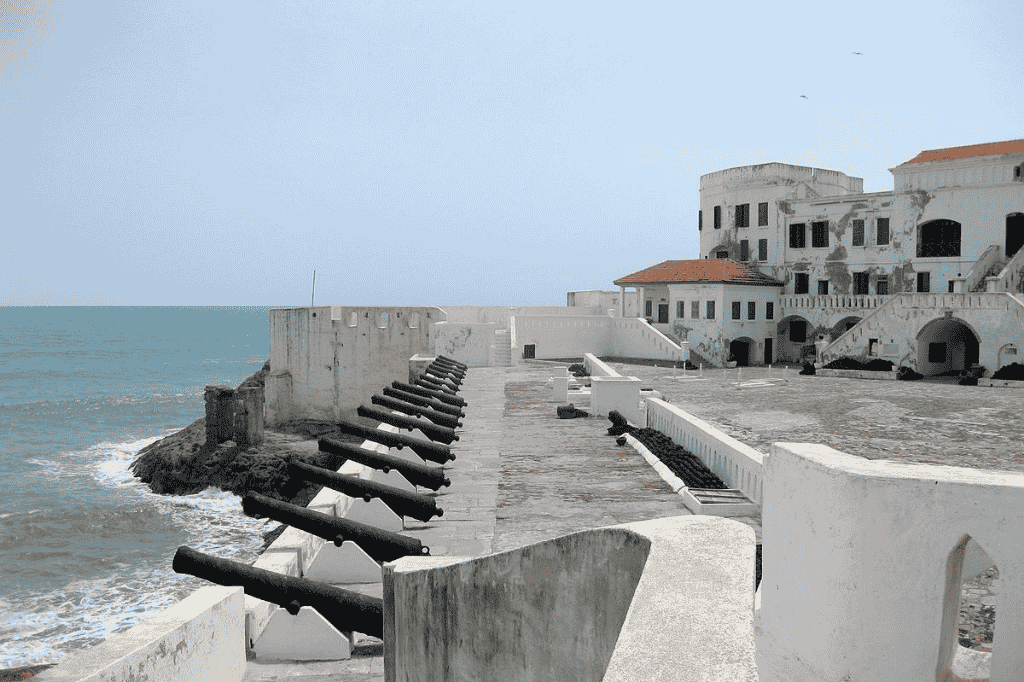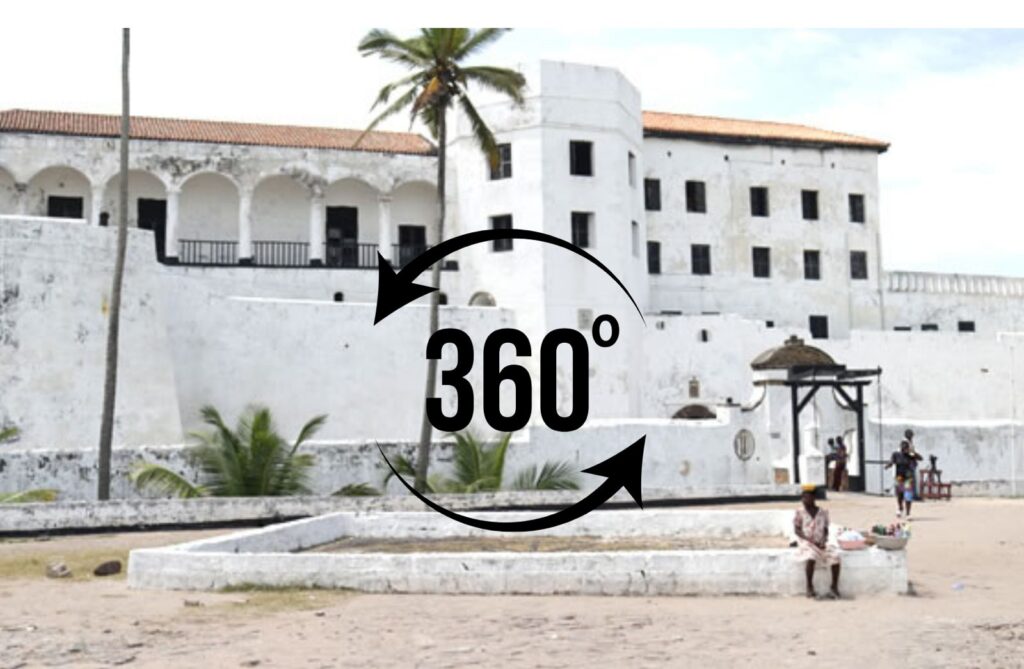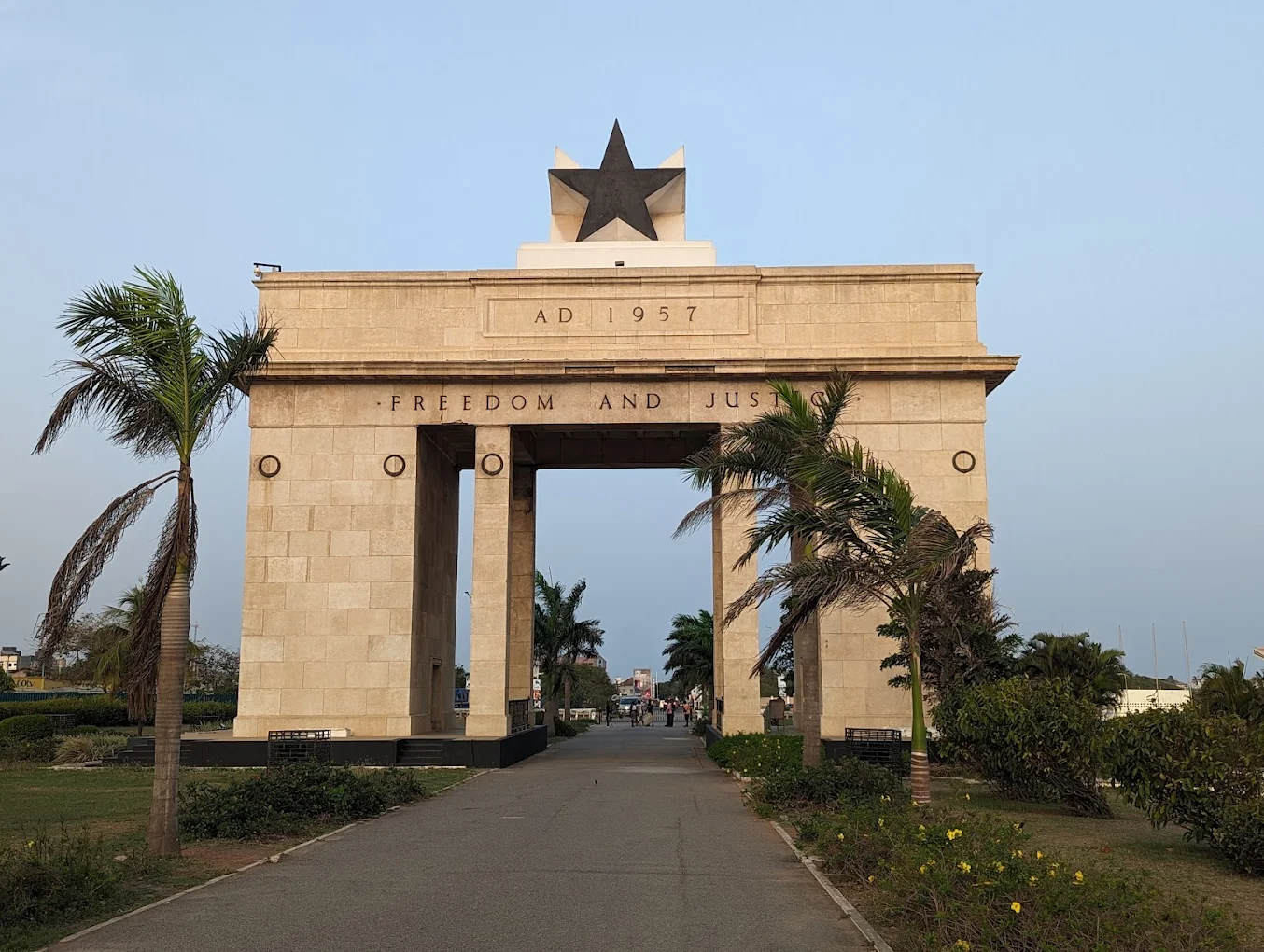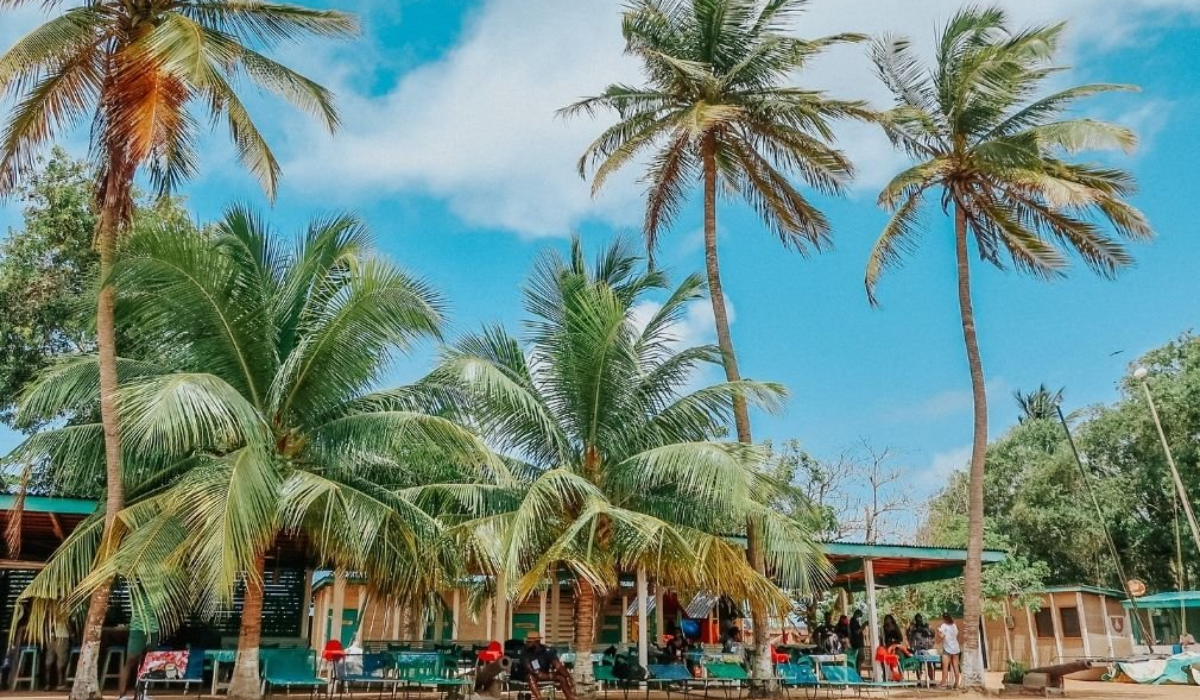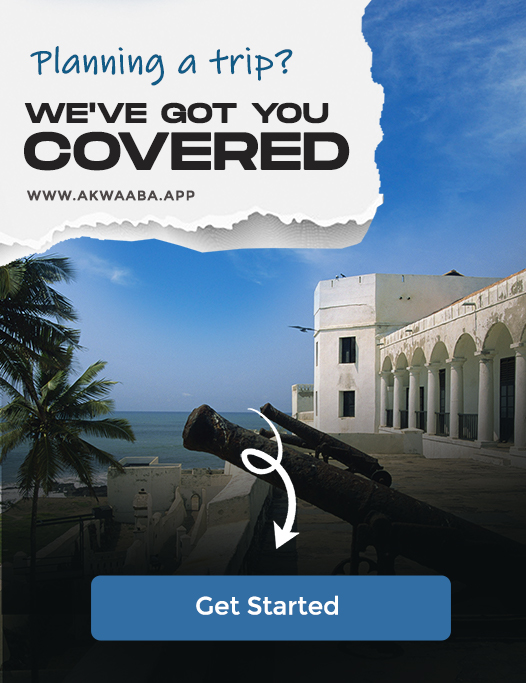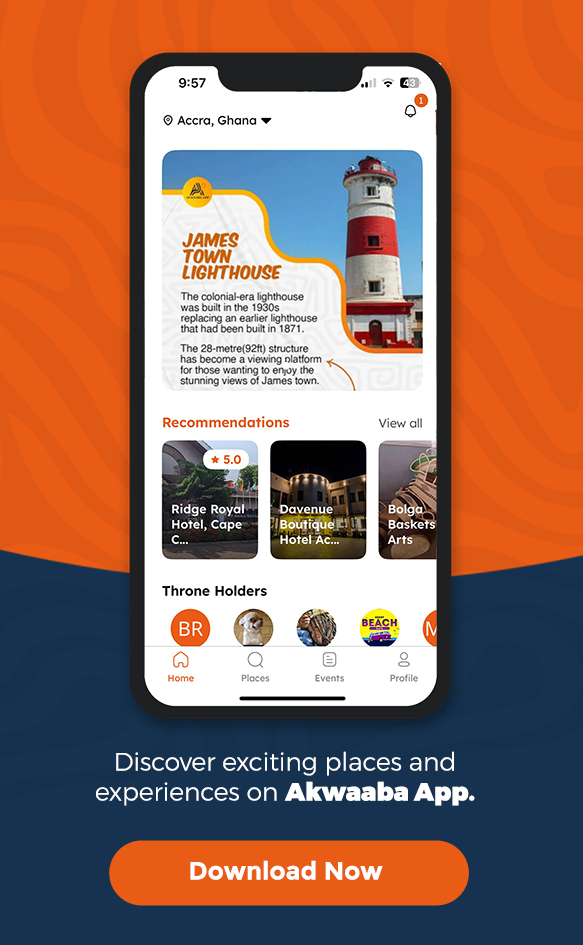Cape Coast Castle – Stories Behind the Walls
TL;DR:
-
📍 Cape Coast Castle is one of Ghana’s most powerful reminders of the transatlantic slave trade.
-
🕯️ Walk through the dungeons and the Door of No Return for a deeply emotional experience.
-
📚 Exhibits connect travelers to Africa’s heritage with history that’s both moving and educational.
With its tall walls against crashing waves, Cape Coast Castle stands out among Ghana’s old buildings. There is a story behind this mighty white fortress that changed the course of history. Since the early days of European traders, its walls have witnessed centuries of history, including one of the darkest chapters of African slave trading.
With its rocky shores on the Gulf of Guinea, Cape Coast Castle has gained UNESCO World Heritage status, which marks it as one of the world’s most outstanding historic sites. The castle was one of the largest slave-holding sites in West Africa, enslaving more than 1000 Africans at one time, making it one of the most significant slave trade centers. It represents both a symbol of resilience and a reminder of Ghana’s difficult past for modern Ghana. Thousands of people visit it every year to reconnect with its rich history.
Why Cape Coast Castle Is One of the Most Important Historical Sites in Ghana
Aside from its impressive architecture, Cape Coast Castle holds great significance. For nearly two centuries, the fort served as British administrative headquarters in Ghana, shaping the country’s colonial history. Due to its location in Cape Coast, it played a key role in African and European trade and cultural exchange.
This castle played an important role in the transatlantic slave trade along the Gold Coast more than just being a colonial outpost. Many people worldwide, particularly African Americans, see Cape Coast Castle as the last link to their African heritage.
Also read other Cultural and Heritage Sites in Ghana
History of Cape Coast Castle
Portuguese traders opened a small trading post named “Cabo Corso” in 1555. The modest structure marked the start of European presence in what would become one of Africa’s most significant colonial settlements. Trade in gold, ivory, and spices began in the early days, paving the way for centuries of international trade.
By 1652, the Swedish Africa Company had expanded the Portuguese structure to build Fort Carolusburg. Swedish rule on the Gold Coast lasted only a few years – Britain took control in 1664, renaming it Cape Coast Castle, marking the beginning of a new era of British dominance.
French warships attacked the castle in 1757, which marked a pivotal moment for the castle’s history. A combination of granite rock, broken seashells and sand was used as building materials by the British to reconstruct the fortress, making it even more formidable. During this renovation, the basic structure of the building was created.
The abolishment of the slave trade by Britain in 1807 marked a significant change in society. Gold, ivory, and pepper trade became the castle’s primary focus. Cape Coast Castle ended its role as the seat of colonial power in 1877 when the British colonial administration relocated to Accra’s Christianborg Castle
.Click Here to see 360 view of Cape Coast Castle
How Cape Coast Became a Colonial Power Hub in Ghana
During British colonial rule, Cape Coast Castle served as the perfect administrative center due to its strategic location and strong defences. Because of its location, the castle had easy access to inland territories as well as maritime trade routes. Through this base, the British established schools, implemented administrative systems, and controlled trade throughout the Gold Coast.
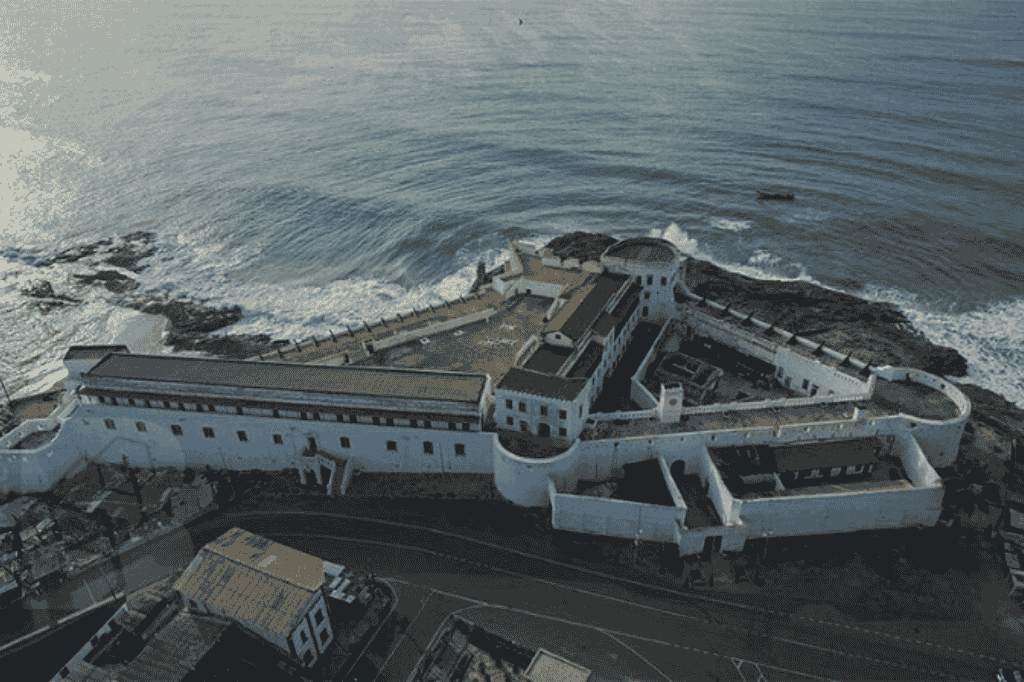
Architecture & Features of Cape Coast Castle
Castle architecture reveals how it evolved from a trading post to a fortress over the centuries. In addition to offering stunning views of the coastline, Dalzel Tower served as an early warning system for approaching vessels.
A dark history of slavery is revealed in the slave chambers and holding cells under the ground. It is hard to describe the conditions in these confined, airless chambers where hundreds of prisoners were held. Years of human suffering are still visible on the thick walls.
The castle’s large collection of cannons and mortars demonstrates its military might. The upper defensive walls once served as a line of defence against local resistance and rival European powers. There are still many of these original cannons in place today.
Often overlooked are the castle’s underground tunnels, which interconnect different parts of the fortress to one another. Despite their full history, these passages are believed to have served as escape routes for slaves during revolts against slavery.
Among the castle’s most powerful symbols is the “Door of No Return.” Before boarding ships to the Americas, enslaved Africans exited this narrow portal.
Visitors can gain a deeper understanding of slavery’s complex history by visiting West African Historical Museum, which is located inside the castle walls.
Cape Coast Castle Photos – Top Photo Spots & Visual Storytelling
Here are some of the most compelling photo opportunities:
The breathtaking exterior view from the beach at sunrise
The “Door of No Return” with its spectacular lighting
The upper ramparts with their panoramic views of the ocean
Seeing the world from Dalzel Tower
Female dungeon courtyard sunset shots
A historical cannon against the ocean background
The airy interior corridors
Furnished governor’s quarters
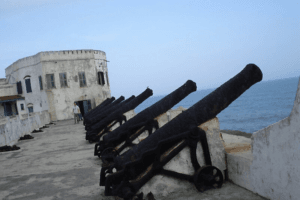
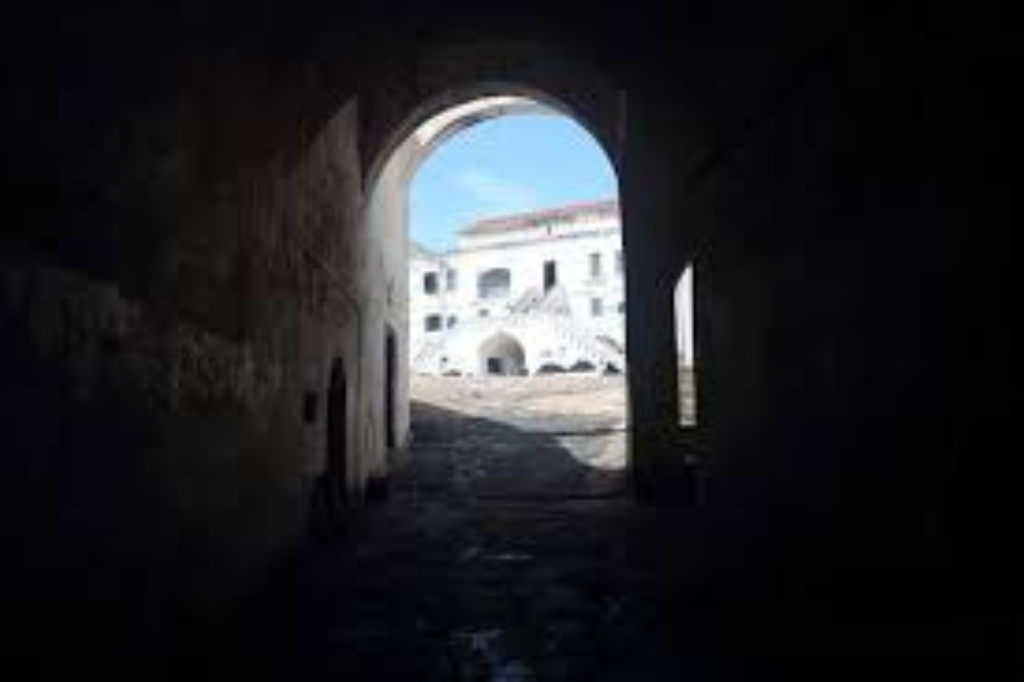
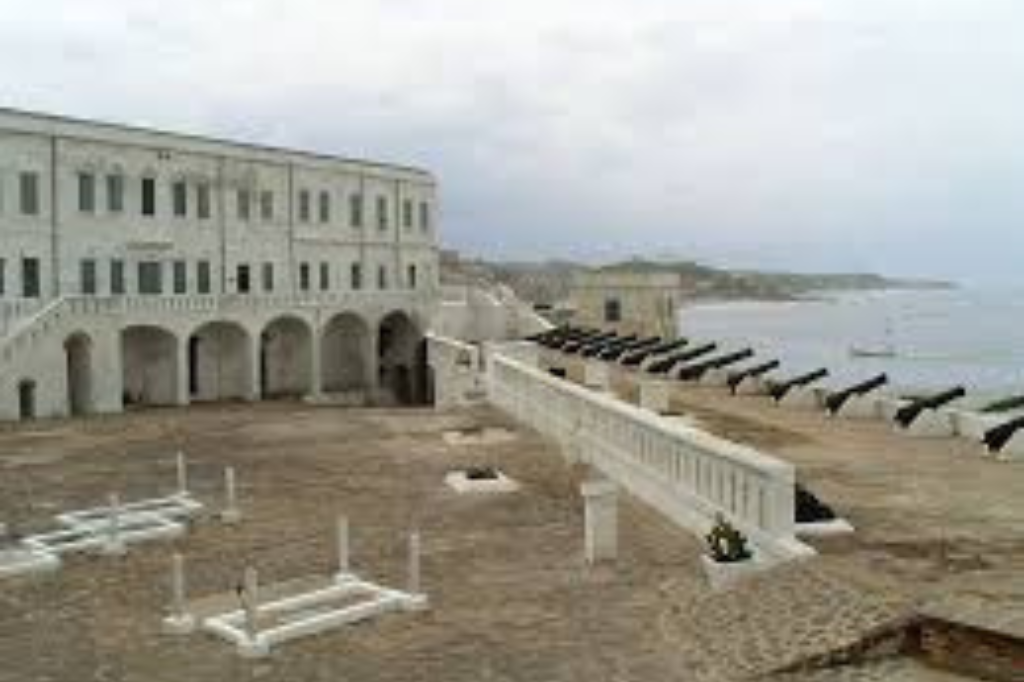
📲 Plan It All with Akwaaba App
Skip the back-and-forth. With the Akwaaba App, you can:
✅ Build a custom Travel itinerary
✅ Book a curated travel tour with lodging and transportation
✅ Get verified homestays, eco-lodges, or guesthouses
✅ Chat with local hosts and tour coordinators
✅ Access community tips and last-minute event updates
✅ Volunteer through registered nonprofits with a few taps
Visiting Cape Coast Castle – Complete Travel Guide
Location: About 165 kilometers from Accra, the castle is located in the heart of Cape Coast, Ghana. Because of its central location, it is easily accessible from any part of the city.
Getting there is straightforward:
-
- It is possible to take a taxi or ride an Uber from Cape Coast town on a regular basis
-
- There are buses that connect major cities with Cape Coast
-
- Visitors who wish to drive themselves can rent cars
-
- There are tour operators that offer direct transport from Accra
Best Time to Visit:
-
- The best weather is from November to March (dry season)
-
- There are fewer crowds in the early mornings (9-11 AM)
-
- Weekends are generally busier than weekdays
-
- A variety of special events are held during PANAFEST (the biennial cultural festival).
Entrance Fees:
-
- Local visitors: [5 usd]
-
- International visitors: [7 usd]
-
- Discounts are available to students
The West African Historical Museum – Artifacts & Culture
Its museum features a fascinating collection of artifacts that illustrate the history of the castle. Several original items, such as shackles and chains, reveal the brutal reality of the slave trade. It is through these artifacts that visitors can connect to the past and learn more about the human cost of this history.
A display of ceremonial drums and traditional objects highlights Ghana’s rich cultural heritage. It is evident from these items that there was a vibrant culture before and during colonialism.
During a visit to the castle, visitors can examine rare Portuguese and British muskets as well as historical documents and maps that illustrate the castle’s role in colonial trade. Artwork and paintings from the castle’s past provide insights into life during different periods.
Why This Museum is a Must-Visit in Cape Coast, Ghana
The museum provides crucial historical context through its comprehensive exhibits and knowledgeable guides. It helps visitors understand not just what happened, but why it matters today.
Nearby Attractions & Things to Do in Cape Coast
Another viewpoint of Ghana’s slave trade history can be found at Elmina Castle, located only 13 kilometers away. Portuguese builders built it in 1482, making it the oldest European structure in sub-Saharan Africa.
At Kakum National Park, visitors can enjoy a canopy walkway that extends 30 meters above the rainforest’s surface. Parks provide a perfect contrast to historical sites. In Cape Coast Market, you can find traditional crafts, fabrics, and fresh food. Modern Ghanaian culture can be experienced here.

Located near Cape Coast Castle, the beaches provide a peaceful place to reflect. A visit to this castle offers beautiful sunset views and quiet spaces to process the emotional impact.
Why Cape Coast is a Must-Visit Destination in Ghana
Apart from its historical importance, Cape Coast offers a blend of culture, nature, and modern Ghanaian life that makes it an essential stop on any Ghana trip.
Planning Your Visit
Excited to visit Cape Coast Castle? For a memorable visit, here are a few tips:
-
- Get the most out of your visit by booking a guided tour
-
- For photos, bring a camera (respecting restricted areas)
-
- Wear shoes that are comfortable to walk in
-
- For a complete visit, allow 2-3 hours
-
- To avoid crowds, visit early in the morning or late in the afternoon
-
- Hydrate yourself and pack plenty of water
The Cape Coast Castle is more than a historical site – it exemplifies the cruelty and resilience of humanity. Visits like yours help preserve world history for future generations. With Akwaaba, you can book tours and find out what the entrance fees are.
Akwaaba App – Your Digital Guide to Ghana’s Heritage
Download the Akwaaba App for real-time ticket booking & tour reservations, comprehensive travel guides, and other historical sites in Ghana for hassle-free travel. Get the Akwaaba App today and experience Ghana like never before!
